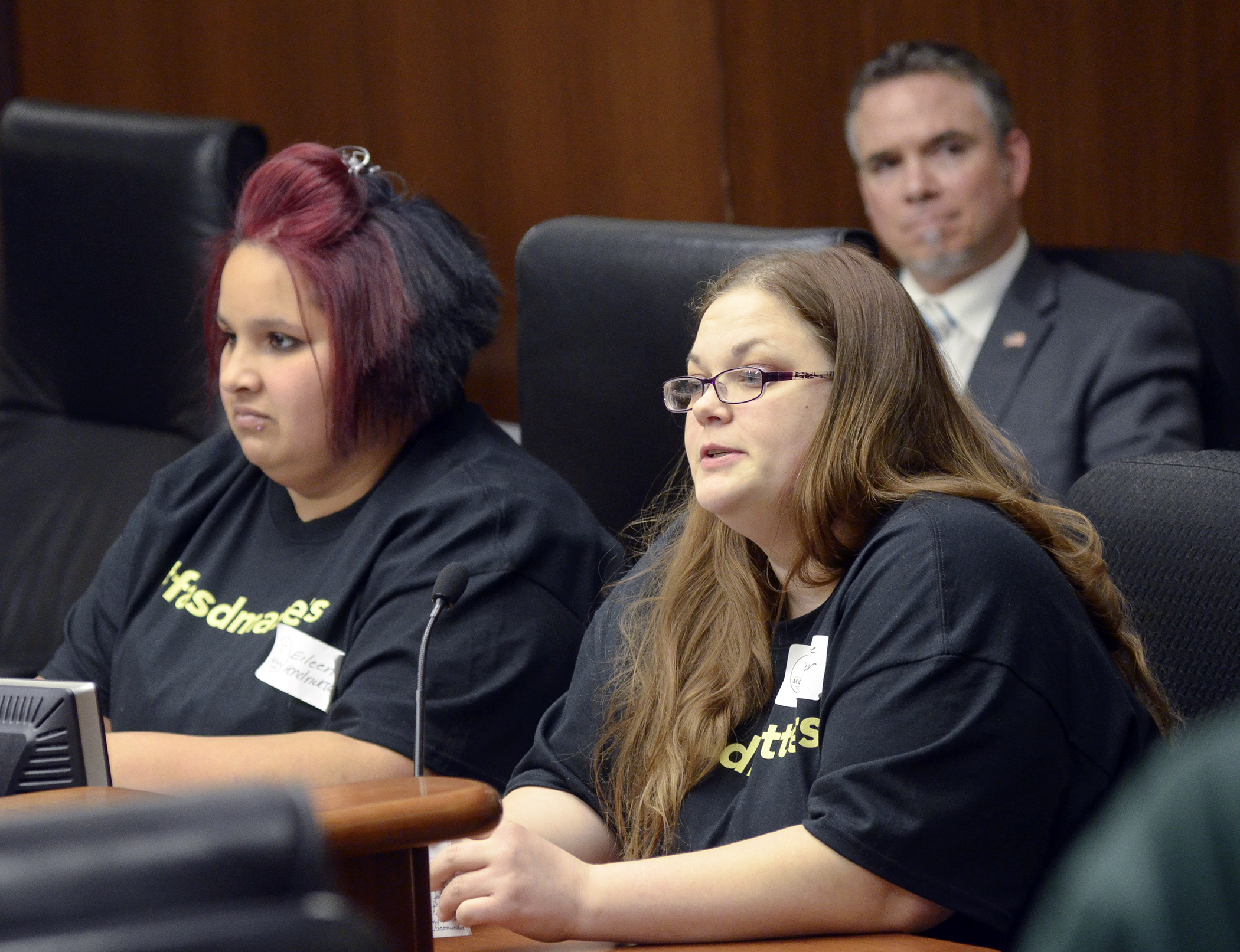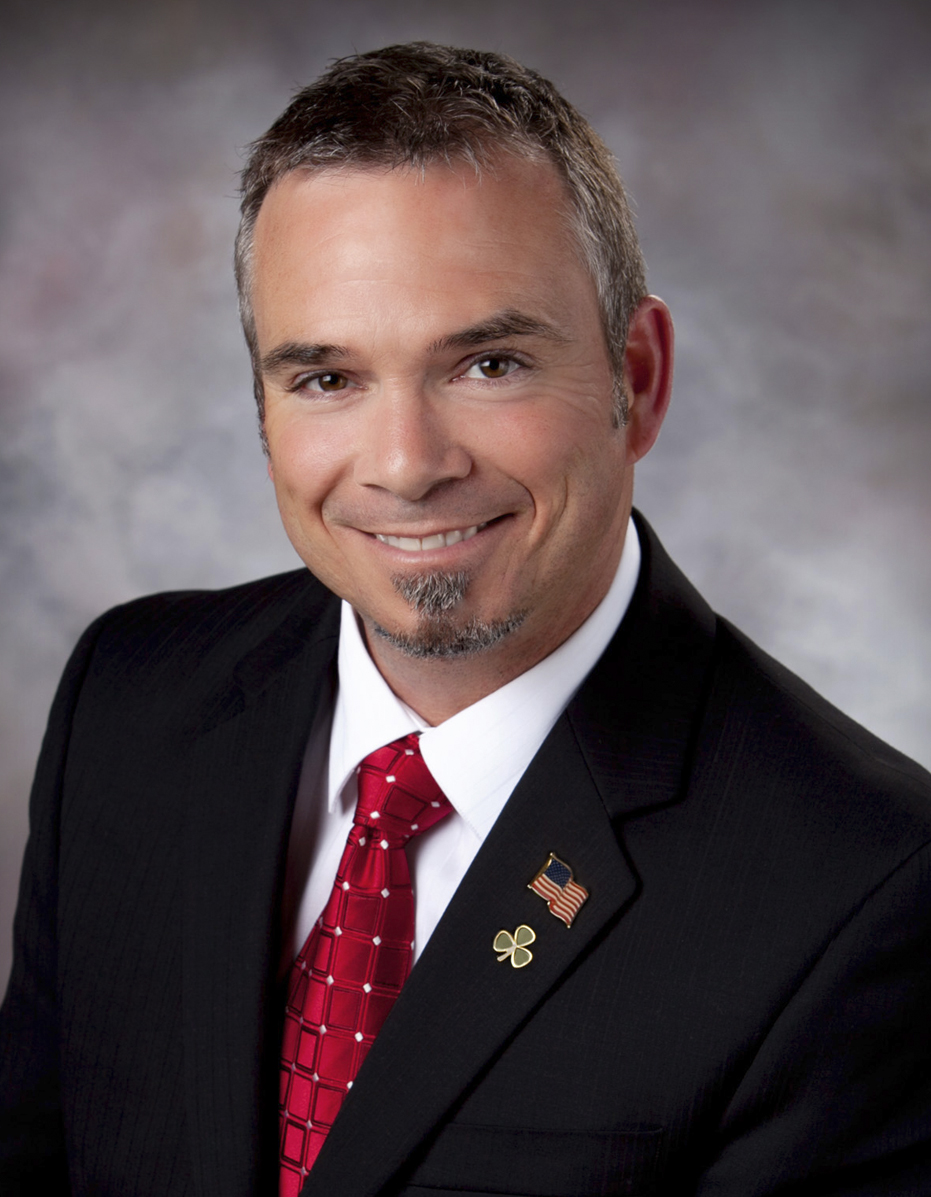Two counties earmarked for fetal alcohol spectrum disorder prevention grants

Living with fetal alcohol spectrum disorder has been difficult for Peter Lorentz, a third-grader from Mankato.
“This is an invisible disease, but I am not invisible,” the 9 year old told the House Health and Human Services Finance Committee, which was considering a bill Tuesday to fund alcohol prevention programs for pregnant women.
HF974 would appropriate $4 million from the General Fund during the 2016-17 biennium to the Minnesota Organization on Fetal Alcohol Syndrome, which offers grants to regional partnerships aimed at reducing fetal alcohol spectrum disorders in babies.
Sponsored by Rep. Joe McDonald (R-Delano), the bill, as amended, was laid over for possible omnibus bill inclusion. A companion, SF948, sponsored by Sen. Melisa Franzen (DFL-Edina), awaits action by the Senate Health, Human Services and Housing Committee.
An estimated 23 percent of women of child-bearing age binge drink, according to Susan Carlson, the organization’s founder and president and former Minnesota first lady. “We know it’s the most common drug of choice. And it’s 100 percent preventable.”
Partnerships eligible to apply for a grant would have to include at least one local government and at least one community-based organization. Two of the proposed recipients must include services to Olmsted and St. Louis counties, where programs are already underway. Rural and urban areas would be represented when doling out the grants. The organization would be able to keep up to 8 percent of the appropriation to administer the grant program.
About one in four babies born in the country were exposed to alcohol as fetuses, Carlson said. A baby born with a fetal alcohol spectrum disorder is likely to cost the state $1.7 million in public services by the time the child reaches age 20, she added.
Programs have the dual advantage of helping mothers, too.
Katie Seaver of Rochester participated in the Community of Recovery Aiding Families in Transition (CRAFT) program in Olmsted County. She met individually with her case manager, attended group sessions twice weekly and received help with necessities such as clothing and diapers for her second child who was born drug-free.
“I gained confidence in becoming the person I was meant to be,” said Seaver, who said she’s been sober two years.
Each year, grant recipients would be required to report health outcomes of the services and programs funded, including the number of pregnant women served and the number of babies born toxic-free.
Related Articles
Search Session Daily
Advanced Search OptionsPriority Dailies
Ways and Means Committee OKs proposed $512 million supplemental budget on party-line vote
By Mike Cook Meeting more needs or fiscal irresponsibility is one way to sum up the differences among the two parties on a supplemental spending package a year after a $72 billion state budg...
Meeting more needs or fiscal irresponsibility is one way to sum up the differences among the two parties on a supplemental spending package a year after a $72 billion state budg...
Minnesota’s projected budget surplus balloons to $3.7 billion, but fiscal pressure still looms
By Rob Hubbard Just as Minnesota has experienced a warmer winter than usual, so has the state’s budget outlook warmed over the past few months.
On Thursday, Minnesota Management and Budget...
Just as Minnesota has experienced a warmer winter than usual, so has the state’s budget outlook warmed over the past few months.
On Thursday, Minnesota Management and Budget...
